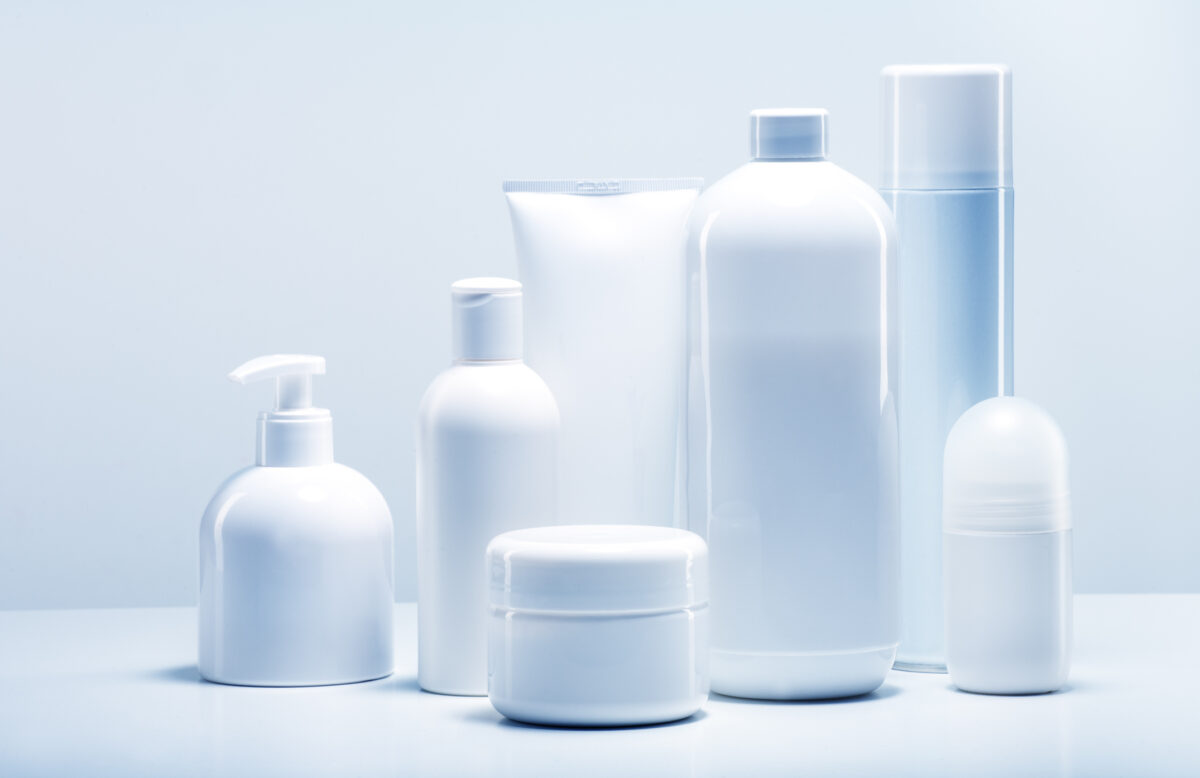
Lead the charge to reformulate for 1,4-Dioxane limits
Stay ahead of New York State’s 1,4-Dioxane ban with these tips for personal care product formulators
While consumers are becoming more savvy about the safety of their household cleaning, personal care, and cosmetic products, non-governmental organizations (NGO’s) are scrutinizing the health and environmental impact of these products more closely than ever. 1,4-Dioxane is one of the latest ingredient impurities to go under the microscope.
During the manufacturing of certain surfactants and emulsifiers, 1,4-Dioxane is often a byproduct. This chemical has been classified by the National Toxicology Program (NTP) as “reasonably anticipated to be a human carcinogen based on sufficient evidence of carcinogenicity from studies in experimental animals,” despite there being inadequate evidence to correlate human cancer and exposure to 1,4-Dioxane.
Last December, the State of New York passed a law banning all but trace amounts of 1,4-Dioxane in household cleaning, personal care, and cosmetic products. The law aims to reduce the presence of this substance in drinking water by limiting its presence in consumer products.
Other states may soon follow suit. This means that manufacturers may need to quickly reformulate household cleaning, personal care and cosmetic products to meet the New York law’s 2022 and 2023 deadlines, and also to stay ahead of regulation that may be coming from other states.
To navigate the changing regulatory environment, it’s important to understand the solutions available to significantly reduce or effectively eliminate 1,4-Dioxane from your formulations. That could mean finding an alternative to SLES, a PEG with guaranteed low levels of 1,4-Dioxane or a combination of new ingredients.
Not sure where to start? First download our Flex Brochure.
Next, here are some recommendations.
Flex your formulation muscles
BASF’s Flex portfolio was designed to give formulators the flexibility to meet more stringent 1,4-Dioxane limits in your final formula, while also preserving performance. In addition to our Flex line, our lineup of plant-based and alternative surfactants, emulsifiers, and rheology modifiers can help-you meet lower regulatory limits while making sure your customers stay happy!
Texapon N70 NA FlexGold and FlexSilver can reduce the 1,4-Dioxane content in shampoo, bath and shower products with the same great foaming properties you expect. Ideal for clear or pearlescent products of medium or high viscosity, they give you more control over unwanted byproducts like 1,4-Dioxane.
To give you an idea of how they’ll help make your formulation compliant with approaching state deadlines, a shampoo reformulated with Texapon N70 NA FlexGold went from an estimated 2.42–5.1ppm of 1,4-Dioxane to 0.42–0.92ppm.
Want to control 1,4-Dioxane content in toothpaste? Pluracare F 127 NF PR Flex is an excellent solubilizer and specified at a level of max. 1ppm of 1,4-Dioxane. Pluracare E 400 NF PEG Flex and Pluracare E 600 NF PEG Flex are water-soluble PEGs, also specified at max. 1ppm. As an example, a toothpaste was measured at 0.7–0.8ppm in typical cases, then reduced to 0.01–0.09 ppm once it was reformulated using all three of the products mentioned above.

Flex Portfolio
| Trade Name | INCI | 1,4-Dioxane Limit | Function |
|---|---|---|---|
| Texapon N 70 NA FlexGold | Sodium Laureth Sulfate | 5ppm | Surfactant |
| Texapon N 70 NA FlexSilver | Sodium Laureth Sulfate | 10ppm | Surfactant |
| Pluracare F 127 NF PR Flex | Poloxamer 407 | 1ppm | Solubilizer |
| Pluracare E 400 NF PEG Flex | PEG 400 | 1ppm | Solubilizer |
| Pluracare E 600 NF PEG Flex | PEG 600 | 1ppm | Solubilizer |
| Eumulgin O 10 Flex | Oleth-10 | 1ppm | Emulsifier |
| Cetiol HE Flex | PEG-7 Glyceryl Cocoate | 1ppm | Emollient |
| Emulgade 1000 NI Flex | Cetearyl Alcohol (and) Ceteareth-20 | 1ppm | Cream Base |
| Eumulgin B 25 NA Flex | Ceteareth-25 | 1ppm | Emulsifier |
| Eumulgin B2 Flex | Ceteareth-20 | 1ppm | Emulsifier |


Know where to prioritize
Concentrate on shampoos, hair pomades and waxes, and toothpaste formulations first, according to BASF’s advice. These categories are more likely to exceed the 1–2ppm limit outlined in the NY law. That said, the limit to meet by 2022 is 2ppm for most rinse-off products and 10ppm for most leave-on products.
Why focus on these ingredients? Shampoos are often based on alkyl ether sulfate (commonly known as SLES). Similarly, pomades and waxes typically use high percentages of polyethylene glycol (PEG) derivatized castor oils and ethoxylated alcohols, while toothpaste formulations tend to have higher levels of PEGs and poloxamers. All these ingredients can contribute 1,4-Dioxane to the formulation.
When you evaluate leave-on formulas, be sure to check out how your emulsifiers and emollients stack up against new 1,4-Dioxane limits. Are they greater than 10ppm? Is the product’s 1,4-Dioxane content even specified? BASF has you covered with Eumulgin O 10 Flex, Cetiol HE Flex, Emulgade 1000 NI Flex and Eumulgin B 25 NA Flex, all specified at a limit of not more than 1ppm 1,4-Dioxane.
Flex Portfolio alternatives not expected to contain 1,4-Dioxane
| Trade Name | INCI | Function |
|---|---|---|
| Plantaren® 818 UP | Coco-Glucoside | Surfactant |
| Plantaren® 2000 N UP | Decyl Glucoside | Surfactant |
| Plantaren® 1200 N UP | Lauryl Glucoside | Surfactant |
| Plantapon® LGC Sorb | Sodium Lauryl Glucose Carboxylate (and) Lauryl Glucoside | Surfactant |
| Plantapon® SF NA | Sodium Cocoamphoacetate (and) Glycerin (and) Lauryl Glucoside (and) Sodium Cocoyl Glutamate (and) Sodium Lauryl Glucose Carboxylate | Surfactant |
| Dehyton® PK 45 | Cocamidopropyl Betaine | Surfactant |
Three steps to rebalance and replace ingredients
Next, you’ll need to identify where you can swap out existing ingredients for ones that can lower the 1,4-Dioxane content. These three steps will help you with shampoos: first rebalance your primary surfactant system, combine sulfate-alternative and non-ethoxylated surfactants, and then switch to rheology modifiers and solubilizers with low or no 1,4-Dioxane (in that order).
For toothpaste, the three steps are to replace PEGs and poloxamers with low 1,4-Dioxane Flex versions, rebalance the ratio of water content to rheology modifier, and switch to non-ethoxylated surfactants. Of course, you’ll need the right products to make it happen.
BASF leads the market in low 1,4-Dioxane solutions. Check out our Plantaren line of APG surfactants for hair care, oral care, and skin care applications– they deliver the same great foaming properties with mild cleansing and no 1,4-Dioxane expected!

Call for back-up
Reformulating can be tricky and time-consuming, but you don’t have to do it alone. The formulators at BASF can help you to do the math required to lower or take 1,4-Dioxane out of the equation. Contact us now to start getting your household cleaning, personal care and cosmetic product formulations ready ahead of the deadlines!
+ Contact Us
Watch our webinar on UL Prospector.
While the information presented herein is offered in good faith and believed to accurately reflect the laws, regulations and/or agency guidance as of the date of issue, it is intended only as a general, high level overview and not as legal advice. No warranties of any kind, either expressed or implied, including warranties of merchantability or fitness for a particular purpose, are made regarding the referenced products.

